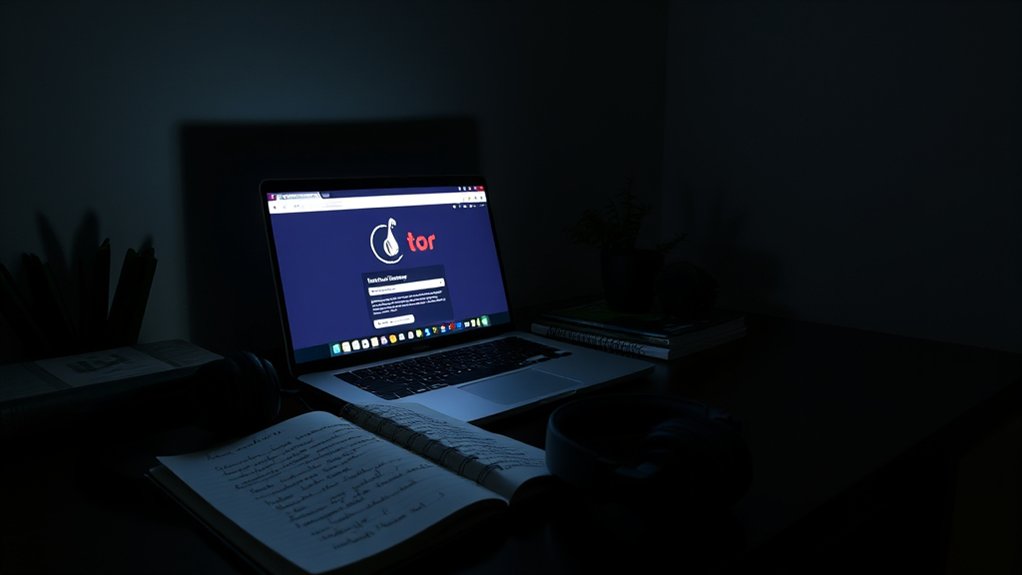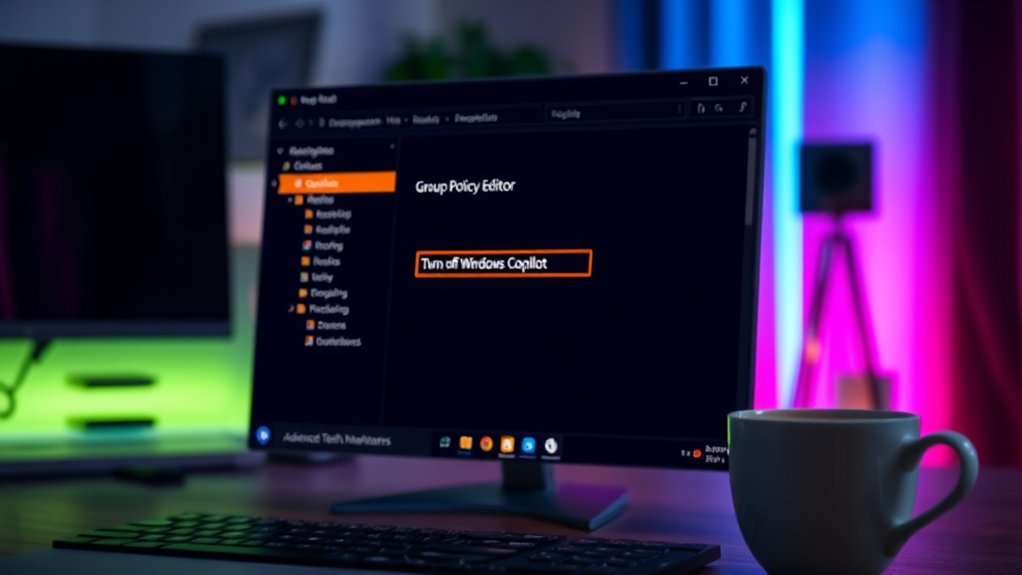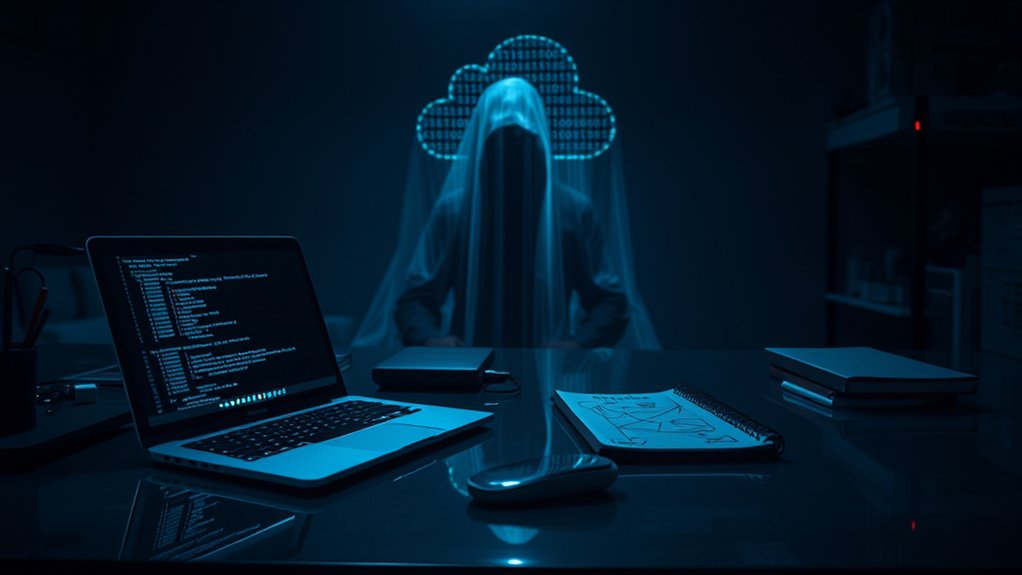Accessing the dark web safely necessitates specific tools and practices to reduce risks. The Tor browser anonymizes traffic, whereas VPNs add encryption, enhancing user privacy. Strong antivirus software is vital for protection against malware, a common threat on these hidden sites. It is significant to recognize that about 43% of dark web content is legal. An informed approach to navigation, including limited personal information sharing, is pivotal for safety. Further insights into best practices are available for consideration.

Accessing the dark web safely requires a thorough understanding of its unique setting, along with the potential risks it presents. The dark web is often misunderstood; it consists of hidden sites not indexed by traditional search engines. While this domain is notorious for hosting illicit activities such as drug trafficking and identity theft, it additionally serves legitimate purposes, such as enabling private communications for whistleblowers and dissidents. Consequently, maneuvering this complex digital space necessitates the use of specialized tools.
To securely access the dark web, individuals must utilize the Tor browser, which anonymizes internet traffic through a network of multiple nodes. In addition, the integration of Virtual Private Networks (VPNs) adds another layer of encryption and obfuscates the user’s IP address, considerably reducing exposure to surveillance. Dark web search engines, like DuckDuckGo, assist users in locating hidden resources safely, while strong antivirus software is vital to defend against the myriad of malware threats commonly found within this setting. Furthermore, understanding essential tools can enhance an individual’s security while exploring.
Utilizing the Tor browser and VPNs is essential for safe dark web access, protecting privacy and enhancing security against threats.
Risks associated with dark web engagement include malware infections, government surveillance, and phishing attacks. Even for individuals accessing this space for legitimate reasons, monitoring by governmental agencies poses considerable risks. Approximately 43% of dark web content is legal, so it is crucial to exercise discernment in navigating this realm. Additionally, over 2.7 million active daily users engage in diverse activities on the dark web, highlighting its varied nature. Emotional distress is another concern, as exposure to disturbing content can have detrimental effects on mental well-being.
Legal considerations also play a role; while accessing the dark web is typically legal, engaging in illicit transactions is not. Thus, best practices for browsing include staying informed about cybersecurity threats, using anonymity tools diligently, and limiting the sharing of personal information. Regular data backups and device updates are important for safeguarding crucial information.
Frequently Asked Questions
Is It Legal to Access the Dark Web?
Accessing the dark web is typically legal in many jurisdictions, including the United States.
Nevertheless, engaging in illegal activities on these platforms can lead to severe penalties.
For instance, laws differ by region; what is permitted in one country might be classified as illegal in another.
Significantly, legal uses exist, such as for journalists seeking to maintain anonymity.
Awareness of the legal framework is vital for those considering accessing these encrypted networks.
Can You Get Hacked While Using the Dark Web?
The dark web presents significant hacking risks.
Cybercriminals frequently utilize this unregulated space to arrange attacks, sell hacking tools, and distribute malware.
According to cybersecurity experts, individuals accessing the dark web face heightened vulnerabilities. A 2023 report noted that 60% of dark web sites are linked to malicious activities, whereas phishing scams are prevalent.
Users are encouraged to implement strong security practices, including encryption and VPNs, to mitigate potential threats and protect sensitive information.
What Tools Do I Need to Explore the Dark Web?
Investigating the dark web requires specific tools for safe navigation. Crucial tools include the Tor Browser, which facilitates anonymous internet access, and a reliable VPN for improved security.
Dark web search engines like Ahmia and DuckDuckGo (.onion) aid in site detection. Furthermore, secure software such as Norton 360 Deluxe protects against malware threats.
Researchers highlight the importance of anonymity and caution, urging users to verify sites to mitigate risks associated with dark web activities.
How Can I Find Reliable Information on the Dark Web?
Finding reliable information on the dark web requires careful navigation and critical evaluation. Users should utilize dark web search engines, such as DuckDuckGo or Torch, during being wary of scams and misinformation.
A critical approach involves cross-validating information from multiple sources. Journalist organizations like ProPublica provide credible content, but anonymity does not assure reliability.
Continuous vigilance is necessary to optimize accuracy amidst a setting where deceptive content proliferates.
What Are the Risks of Using the Dark Web?
The dark web poses significant risks, including involvement in illegal activities such as drug trafficking and weapons trading.
According to cybersecurity experts, these platforms can facilitate human and child trafficking, often under the guise of anonymity.
Furthermore, personal data vulnerabilities abound, with stolen information readily available for malicious use.
Surveillance by government and non-government entities further complicates usage.
Emotional distress from disturbing content can likewise be prevalent, compounding ethical dilemmas related to engagement in this illicit space.









